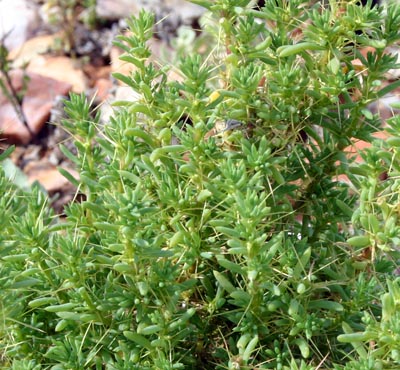|
Sclerolaena
divaricata
pale povertybush
Another Chenopod, the pale
povertybush is also another of the %&%*#! spiny plants on Fowlers
Gap Station. It is found seemingly ubiquitously throughout the area and
can make sitting down for lunch a real pain!
The pale povertybush is a small glabrous
shrub.
Bark: branches are hairless and streaked with red, bark smooth
and lineally striated.
Leaves: fleshy or succulent, hairless, terete,
10-20 mm long and 1-3 mm wide.
Flowers: occur singly where the leave join the stems.
Fruit: yellow, drying to straw coloured, attached very obliqely.
A tube 3-4 mm long with 3 spines 5-15 mm long and 1 scarcely developed.
Source: Frank Kutsche and Brendan Lay (2003). Field guide to
the plants of outback South Australia. Department of Water, Land and
Biodiversity Conservation, South Australia, ISBN 0 7590 1052 8.
Phillip Moore (2005). A guide to plants of inland Australia. Reed
New Holland, ISBN 1 876334 86 X.
Photos: Ian Roach
Back
|


|







